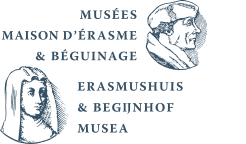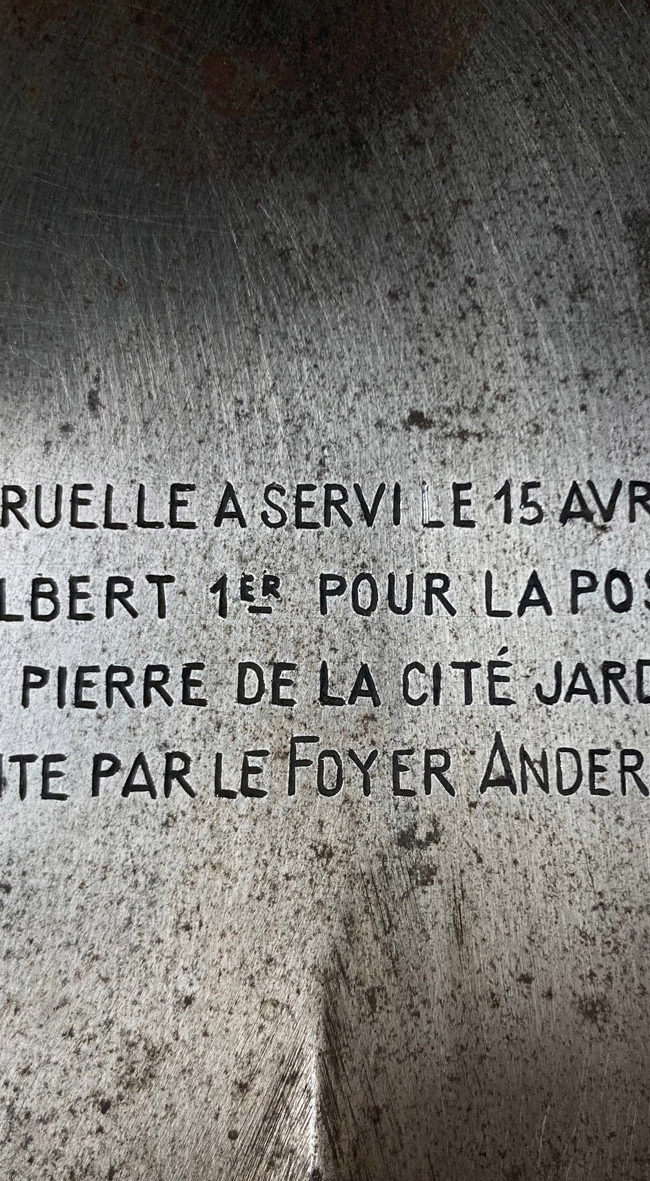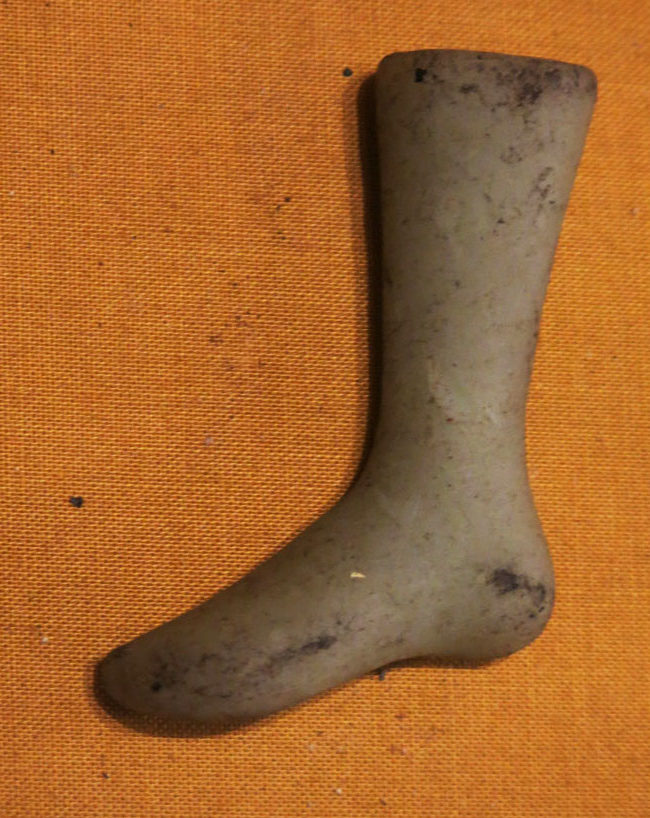
The unusual objects No. 8

Patacon, corone, or mastele: the round cougnou plaques of the Municipal Museums of Anderlecht
Whilst the beguinage is closed for renovations, the Erasmus House Museum is displaying each month an unusual object from the vast historical, archaeological, folk art and religious collections of the municipal museums. Two patacons, or round plaques for cougnous, are presented here.
1. Patacon or round cougnou plaque
Circular pipe clay plaque depicting one of Jacob Cats’s famous sayings, “Elck vogelke singt soo ‘t gebeckt is”.
The plaque is accompanied by its mould.
Belgium, 1850-1900 Pipe clay diam. 10 cm – mould 11,5 cm Inv. BEG 6203.3 et 6203.4
2. Patacon or round cougnou plaque Circular pipe clay plaque with an allegorical depiction of the goddess Flora.
Belgium, ca. 1900-1950 Pipe clay diam. 11,3 cm Inv. BEG 6203.27
Cougnous are Belgium’s well-known Christmas brioches decorated with a small pink sugar Jesus and stuffed with raisins, pearl sugar, or chocolate chips. In olden times they were garnished with a pipe clay disc called a patacon, mastele, corone, or macaron, depending on the region. Just a few craftspeople continue to make them in Wallonia.
The history of the patacon
The patacon or round plaque that decorates a cougnou goes back to the first century of Christianity and the ritual bread that the Germanic tribes made to replace their former human and animal sacrifices. This bread, which became the vollaard, consisted of red currants and its name allegedly came from the Germanic God, Vol, to whom it was offered. This practice was taken over by the Catholic church for a myriad of feast days and ceremonies (Christmas, carnival, weddings, etc.) and gave rise to a brioche representing Baby Jesus, whose sacrifice would redeem humanity, embellished with biscuit dough decorations. If you look at Pieter Brueghel the Elder’s famous painting Children’s Games, (Vienna, Kunsthistorisches Museum, 1560), one of the characters depicted holds one of these famous brioches under his arm. Starting in the 16th century they were also decorated with pipe clay plaques, patacons. The name, which was commonest in Flanders, is thought to come from patagon, a silver coin introduced into the former Spanish Lowlands during the reign of the Archduke and Archduchess Albert and Isabelle (1598-1621) that was used to decorate Christmas or New Year’s cakes. However, since other regions used different names, the etymology of this word remains uncertain.
Production and iconography of the patacon
Patacons were made of a special clay used to make clay pipes (hence the name of “pipe clay”) imported from the Meuse River Valley or Rhineland. After grinding and a long soak this clay becomes creamy white and is easy to mould, especially in the shape of thin wafers, which were then originally pressed by hand or with the help of a wooden press in a patacon mould. Later, the craftsmen used a metal stamping press to which they attached a hollowed-out matrix of the pattern to stamp. The production of these moulds by specialised moulders did not become a full-fledged trade of its own until the 16th century. After being dried and fired, the patacons were brushed and ready to be painted with various scenes, be they religious (saints, Christ, the Virgin Mary) or secular (kings’ portraits, edifying scenes, animals, flowers, fruit, ships, etc.). Whilst cougnou plaques are no longer made, the tradition did persist until the 1950-60s.
The patacons of the Municipal Museums of Anderlecht
The oldest of the two patacons displayed here is accompanied by its mould and dates back to the 19th century. The backgrounds of the plaques were still not painted at the time and profane scenes were becoming more common. The subject depicted may have illustrated a folk saying from a book by Jacob Cats (Spiegel van den voorleden en tegenwoordigen tijd. Derde deel, ca. 1620): “Elck vogelke singt soo ‘t gebeckt is” or “each bird sings according to the shape of its beak”. The scene on the patacon is identical to the illustration that corresponds to this saying in the book, i.e., a poor old woman and a richly clothed man quarrelling in front of three children, which indicates that, unlike birds, human beings can choose the words that they voice and thus must take care not to utter words that can hurt their friends and family. The second patacon is more recent (made between 1900 and 1950) because the background is painted white. It is an allegorical depiction of Flora, the goddess of spring and flowering, as attested by the bouquet and Flora carved in the boulder.
Research and text
Céline Bultreys
Meggy Chaidron
Anne Deckers
Acknowledgements
Zahava Seewald
Céline Bultreys
Anne Deckers







